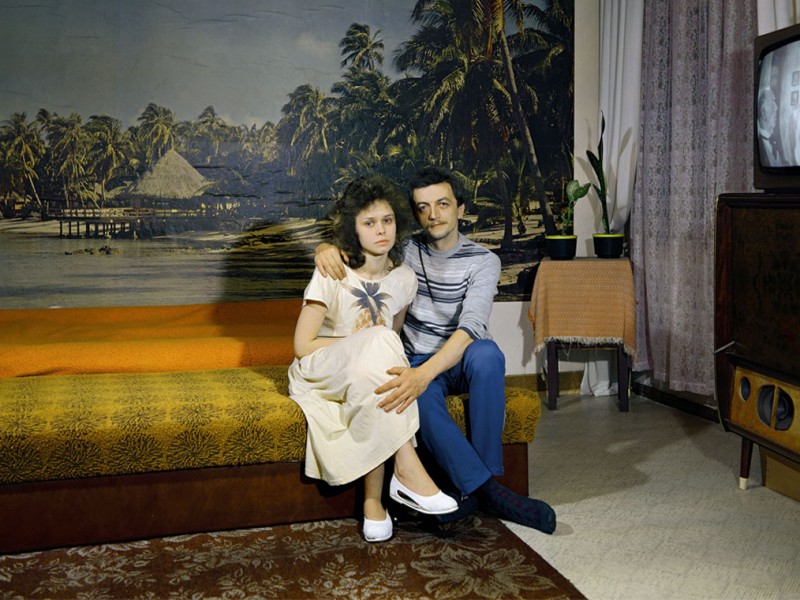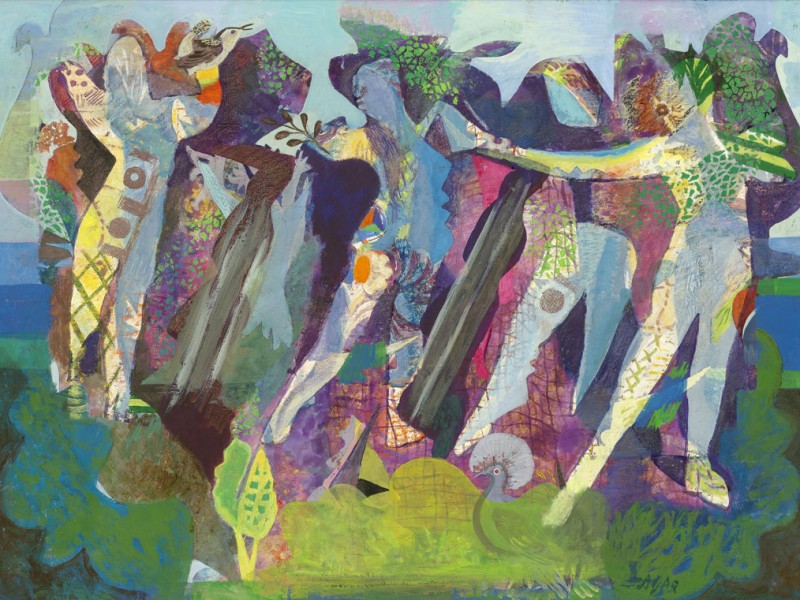The Magnum Gallery is pleased to present MOROCCO, an exhibition of works by Belgian photographer and filmmaker Harry Gruyaert focusing on his extensive travels to the North African country of Morocco. Gruyaert’s first trip to the country marked his colour photography ‘epiphany’. Gruyaert joined Magnum Photos in 1982. The exhibition is presented from 30 January to 2 April 2021 at the gallery and online.
While Gruyaert became fascinated by the power of colour when he first moved to Paris in the 1960s, and subsequently on his first trip to New York in 1968 where he saw the works of Pop artists Roy Lichtenstein and Robert Rauschenberg, his revelation that colour photography was his preferred medium came from his very first trip to Morocco in 1969. Reminiscent of artists Eugène Delacroix and Henri Matisse, this revelation had a long-lasting impact on Gruyaert’s oeuvre which he decided to entirely dedicate to colour photography.
The exhibition presented at the Magnum Gallery in Paris celebrates this realization and spotlights one of his most significant and poetic bodies of works, spanning 40 years of the artist’s work. During his many trips to Morocco, Gruyaert developed a highly personal photographic language, revealing the essence of the colours, landscapes and people he saw and met.
“The first time I went to Morocco, it was love at first sight. Then, I went back to find some places again, to relive the initial emotion, and did this for almost forty years. What seduced me in the first place was the order of things and life in the countryside. There, there was a splendid balance of forms, colours, everyday gestures and nature. The importance of family, group, and religion also fascinated me. At least in the countryside, habit, custom prevail and signify what everyone are. I do not mean to say that Morocco is an immutable country, free from changes and contradictions, but simply that rural residents are still submitted to rules, secular or religious, that we lack in Europe.” Harry Gruyaert.
Gruyaert distinguished himself from his peers, particularly from the Humanist tradition carried on by photographers such as Henri Cartier-Bresson, by focusing as much on the environment as on the people inhabiting it. As he explained in his eponymous opus on Morocco, 2013, communication through photography implies “a visual set which includes people of course, but in the same way as walls, fabrics, animals, light, etc.”
“In this striking selection of works, draped silhouettes and faceless shadows cohabit in warm ochre surroundings. His intuitive approach allowed him to capture the feelings of pride and reserve inherent to Moroccan culture as seen in the opening work of the show, where we see the profile of a young woman in a region of the High Atlas mountains. Some women and men hid their faces with modesty while others turned their back on the stranger that he was. This reluctance to be photographed was enjoyable to him, as it illustrated Moroccans’ state of mind.” Samantha McCoy, Director of the Magnum Gallery and Curator of the exhibition said.
Travelling from the High Atlas to the desert, Gruyaert discovered a great variety of landscapes, architectures, and people. Documenting the rich culture of the country, his passion led him to publish two photobooks on the subject, respectively in 1990 and 2013. Running until 1 April 2021, Museum Helmond features Gruyaert’s first retrospective exhibition in the Netherlands.
Born in Belgium in 1941, Harry Gruyaert studied photography and film-making. He made a few films as director of photography for Flemish television before turning to colour photographs in his adopted Paris in the early 1960s. By the end of the 1970s he had traveled to the United States, India, Egypt, Japan and Morocco. In the early 1970s, while living in London, he worked on a series of colour television screen shots which later became the “TV Shots” now part of the Centre Pompidou collections. Around the same period he also photographed his homeland and produced two books, “Made in Belgium” and “Roots.”
For more visit: magnumphotos.com
Related Features
-
702
-
-
-

